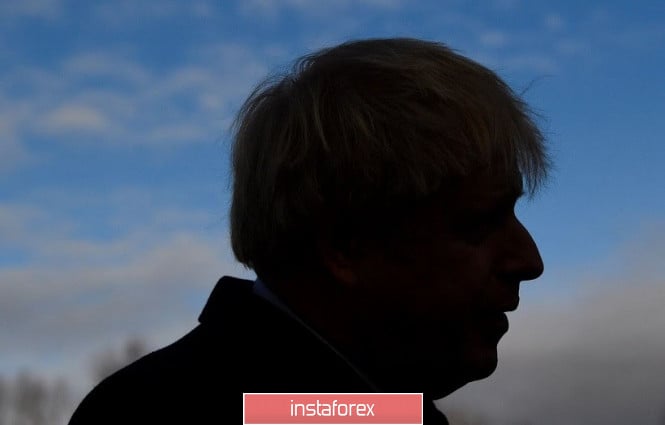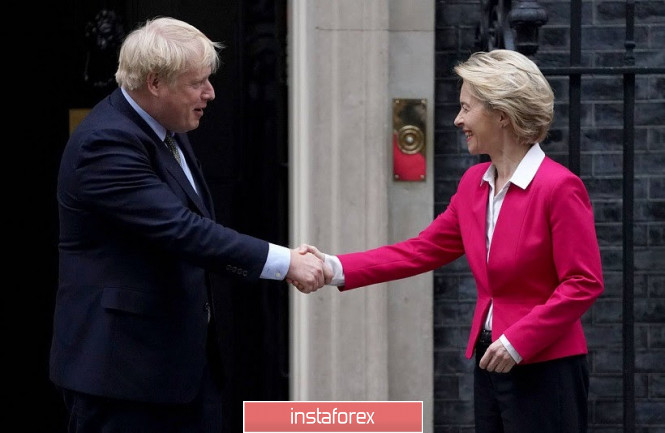Dollar pairs continue to take advantage of the weakness of the US currency. The dollar index is slowly but still slipping to the 96th figure amid massive US protests and a slowdown in the US economy. The risk of a second outbreak of coronavirus in the United States and subsequent lockdown causes quite justifiable concern for investors, as a result of which the greenback has become a "persona non grata" in the foreign exchange market.
The pound-dollar pair here was no exception: for the first time since the end of April, GBP/USD tested the area of the 26th figure as part of its upward trek. The pound has risen in price since Friday, and British events related to the exit from the lockdown and the negotiation process between London and Brussels also contribute to this. All of these fundamental factors have allowed buyers to upgrade the four-week high. At the same time, the pound maintains the potential for further growth - the closest resistance level is located at 1.2740 - this is the lower border of the Kumo cloud on the weekly chart. Of course, to achieve this target, the bulls must first gain a foothold in the 26th figure, and judging by the downward pullbacks, this is a rather difficult task. Nevertheless, if the news from the "negotiation front" is positive, the pound will be able to overcome the 150-point distance in a few hours. As you know, the British are very keenly reacting to any more or less significant news regarding the prospects of Brexit.

Let me remind you that at the end of last week, the pound rose on the news that Boris Johnson will hold personal talks in June with the head of the European Commission and the leaders of key EU countries. General pessimism was again replaced by ghostly hopes: after all, last year it was Johnson who was able to move the long-suffering Brexit issue off the ground, having successfully negotiated with the prime minister of Ireland and further with the EU leadership. This year, the dialogue on a new agreement came to a standstill barely beginning: the parties could not find common ground on any key issue. Then the negotiators were forced to interrupt the negotiation process due to quarantine, resuming it only this week.
However, a pause in the negotiations did not benefit: the parties are still upholding their positions, and London is categorically against prolonging the transition period, even despite the coronavirus crisis. That is why Boris Johnson has such great hopes. According to the Financial Times, the British politicum, including the prime minister's inner circle, convinces Johnson to give the negotiations a "political impetus" so that the parties can find a common denominator by the end of the summer. As noted by an unnamed British senior official, London should not delay the negotiation process even until October, given the consequences of the coronavirus crisis. At the same time, the European Union believes that reaching an agreement before the end of the year will be "very difficult, but possible."
At the moment, it is not known exactly when Boris Johnson will meet with Ursula von der Leyen. According to general expectations, this will happen at the end of this month, probably after the summit of the European Commission (June 19), which will be entirely devoted to the approval of the anti-crisis plan of the European Commission. Most likely, after this summit, Brussels will deal closely with the British issue.
As I said above, traders have hopes that a personal dialogue between Johnson and the EU leadership will help cut the knot in one form or another: either negotiations will move forward, or London will nevertheless agree to extend the transition period, since there is a suitable, "politically reliable" reason for this - the coronavirus crisis. By the way, the mayor of London has already appealed to the British government with a request, asking not to aggravate the already difficult economic situation in the country.

An additional factor supporting GBP/USD is the weakening of quarantine in Britain. Markets and schools partially opened in the country, competitions in professional sports tournaments resumed, etc. In addition, according to the results of the last day, a little more than one and a half thousand new patients with coronavirus were found in Britain - this is the lowest figure since March 23.
Also, do not forget that the pair is growing due to the weakening dollar, which is under pressure from recent events in the United States. Due to ongoing unrest in the United States, nearly two thousand troops were put on alert near Washington, while Trump is calling for troops to be sent to New York. In large cities across the country, protests continue, in many cases they are accompanied by looting. According to the American press, the death toll has increased to 11, and the number of detainees is estimated in the thousands (according to the latest data - more than 8 thousand). In the US, news about the protests dominates the news about coronavirus - on CNN, MSNBC and Fox News on Sunday May 31, 2.5% of the broadcast was devoted to coronavirus and 25% to protests. However, the market is concerned precisely with the coronavirus - and more precisely, the risk of a re-outbreak. The economic consequences will be disastrous if the United States quarantine again. Such a fundamental background exerts quite strong pressure on the dollar, which is weakening throughout the market.
Thus, the pair retains the potential for its further growth. The nearest price barrier is 1.2600. If the bulls can gain a foothold above this target, we can consider long positions with the first target of 1.2700 and 1.2740 (the lower border of the Kumo cloud on the weekly chart).
The material has been provided by InstaForex Company - www.instaforex.com